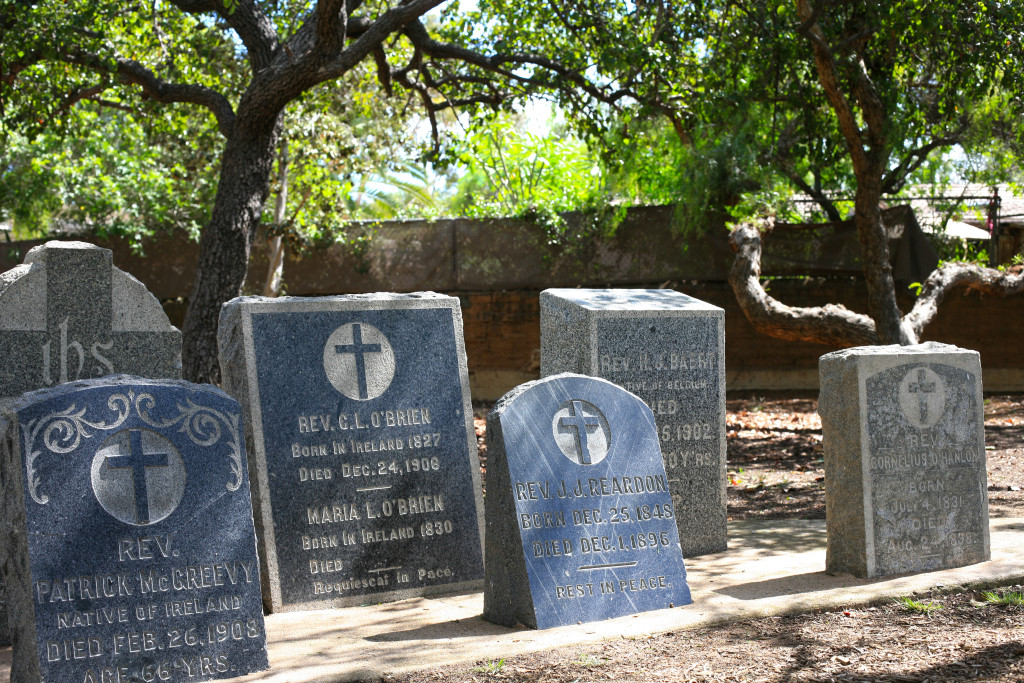Goth Guide to San Diego
December 12, 2018
Travel and Lifestyle, With a Dark Twist

I live for contrasts. The combination of hard and soft, growth and decay…That’s probably why I’ve always been so enthralled by old cemeteries. Ornate stonework, delicate wrought iron gates, flowers and plant life sprinkled across the grounds, all combined in a place that’s intended to house the deceased.
Lately I’ve been positively possessed by macabre needlework. Embroidery is typically thought of dainty, delicate, and — of course — feminine. Which is why finding these embroidery artists is such a treat. Their gruesome subject matter lends a little edge to the art of needlework, while the delicate nature of the materials lends a bit of softness to subjects that some folks would find off-putting.
Adipocere is the master of peculiar needle and thread art. While there aren’t many items up for sale at the moment on his site, be sure to follow his Instagram for the latest breathtaking designs.
Tinycup Needleworks also produces remarkable work. All of her pieces are one of a kind and available by commission only, so they can be hard to come by. But even if you can’t own one for yourself, you can enjoy her work on her Instagram as well.
A photo posted by tinycup needleworks (@tinycup_) on
For finding something more easily attainable for your own home, Oeroeboeroe has a well-stocked Esty shop full of delightful pieces, like this bird skull surrounded by colorful flowers.
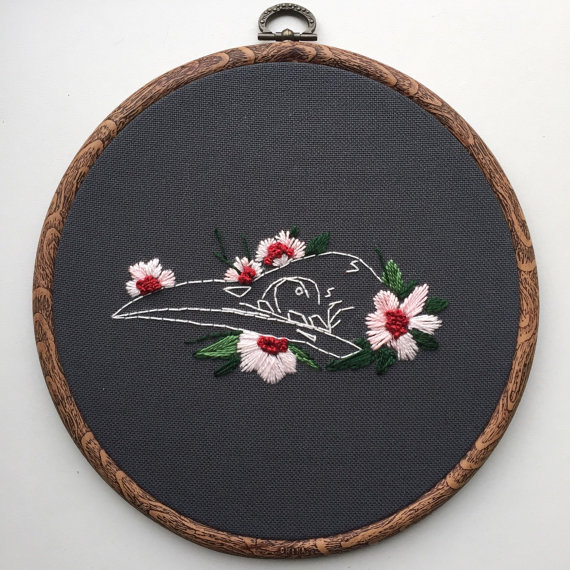
The Etsy shop of MoonriseWhims features a lot of terrific feminist embroidery, but I was particularly drawn to this quote from Edgar Allan Poe, which sums up perfectly why I’m so drawn to the aesthetic combination of beautiful and creepy. Special bonus: her shop is located in my hometown!
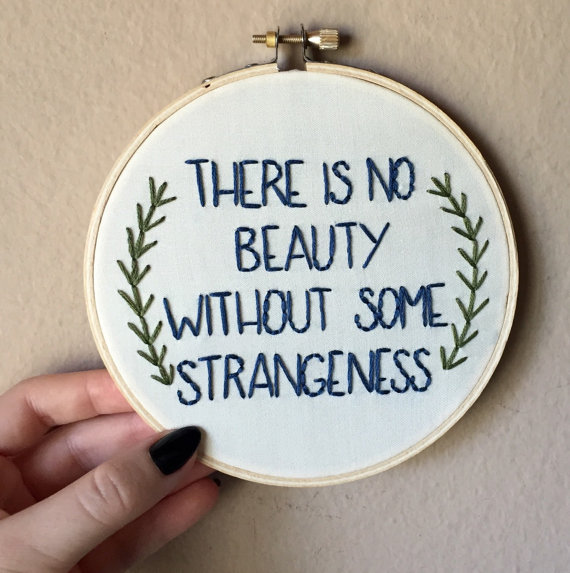
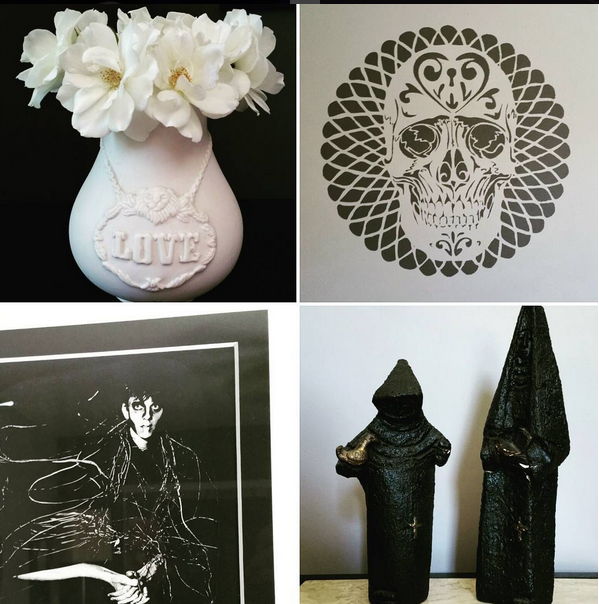
Never underestimate the power of good home decor. Coming home to a living room or bedroom that’s an extension of your own personality can be comforting, soothing, and even revitalizing, especially after a long day.
One of my favorite items from my own home is this duvet cover designed by Sophy Tuttle. Affectionately referred to in our home as the “party crow,” the little guy on this duvet cover is just the right mix of creepy, funny and stylish. At KESS InHouse, you can buy her designs on all sorts of home decor items ranging from pillow cases to clocks.

Pillows are a perfect way to add a touch of dark whimsy to any home, since they require little investment and can be swapped out easily. I’m currently in love with this one from Sovrin:
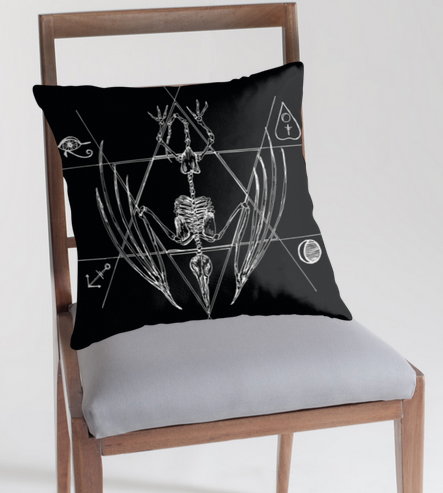
I’ve been a fan of all the great leggings that Sovrin designs, so I’m delighted to know that I can have their great designs dressing up my couch, too. I think this feline fellow from Black Craft Cult might be the purrrfect couch-mate (sorry, I had to do it…).
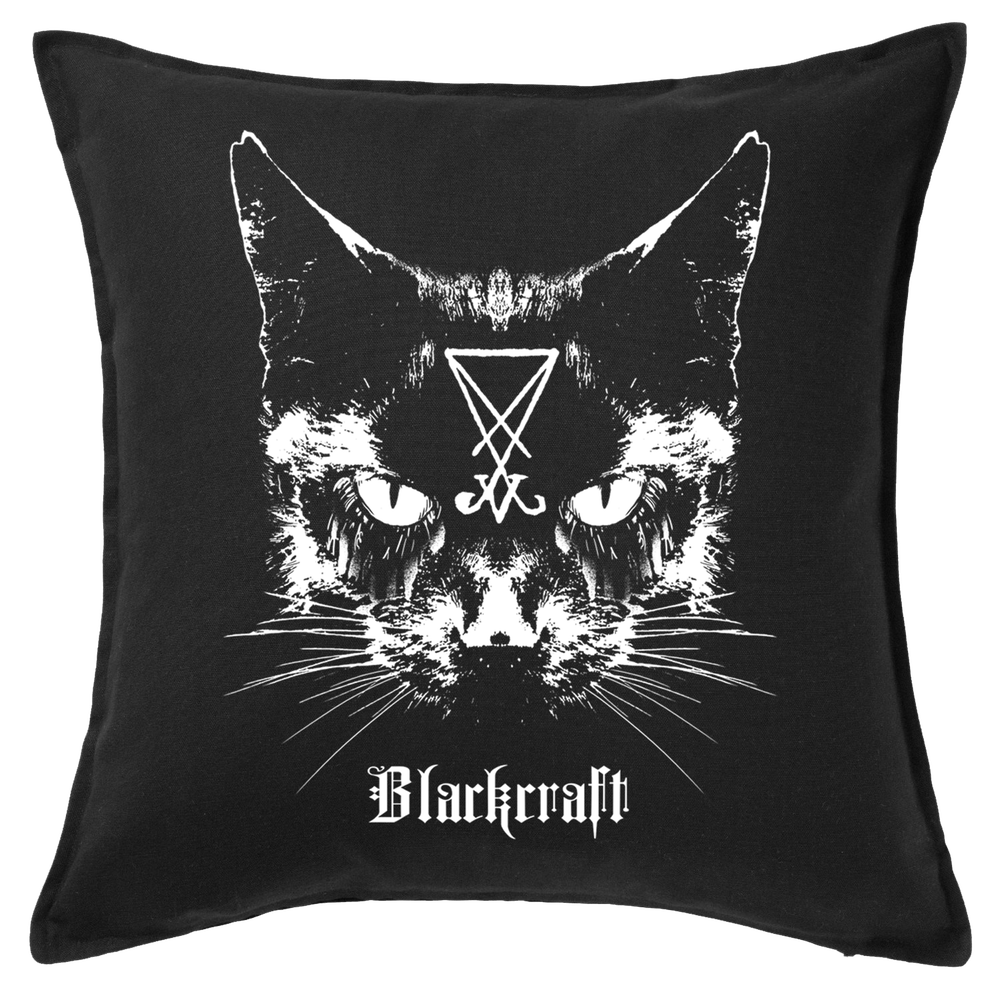
When it came time to decorate my own home, I was delighted to find that dark-inspired wallpapers are everywhere these days. One of my favorites is this bat print from Flavor Paper:
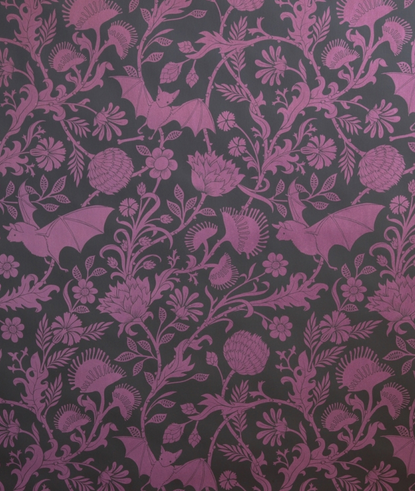
Don’t be intimidated by wallpaper – if the idea of covering your walls top to bottom seems like too much, you don’t have to keep it confined to the walls! I used the Aleister print by Grow House Grow to makeover an extremely bland desk and file cabinet.

Have a favorite home decor shop (online or otherwise)? Share it in the comments below!
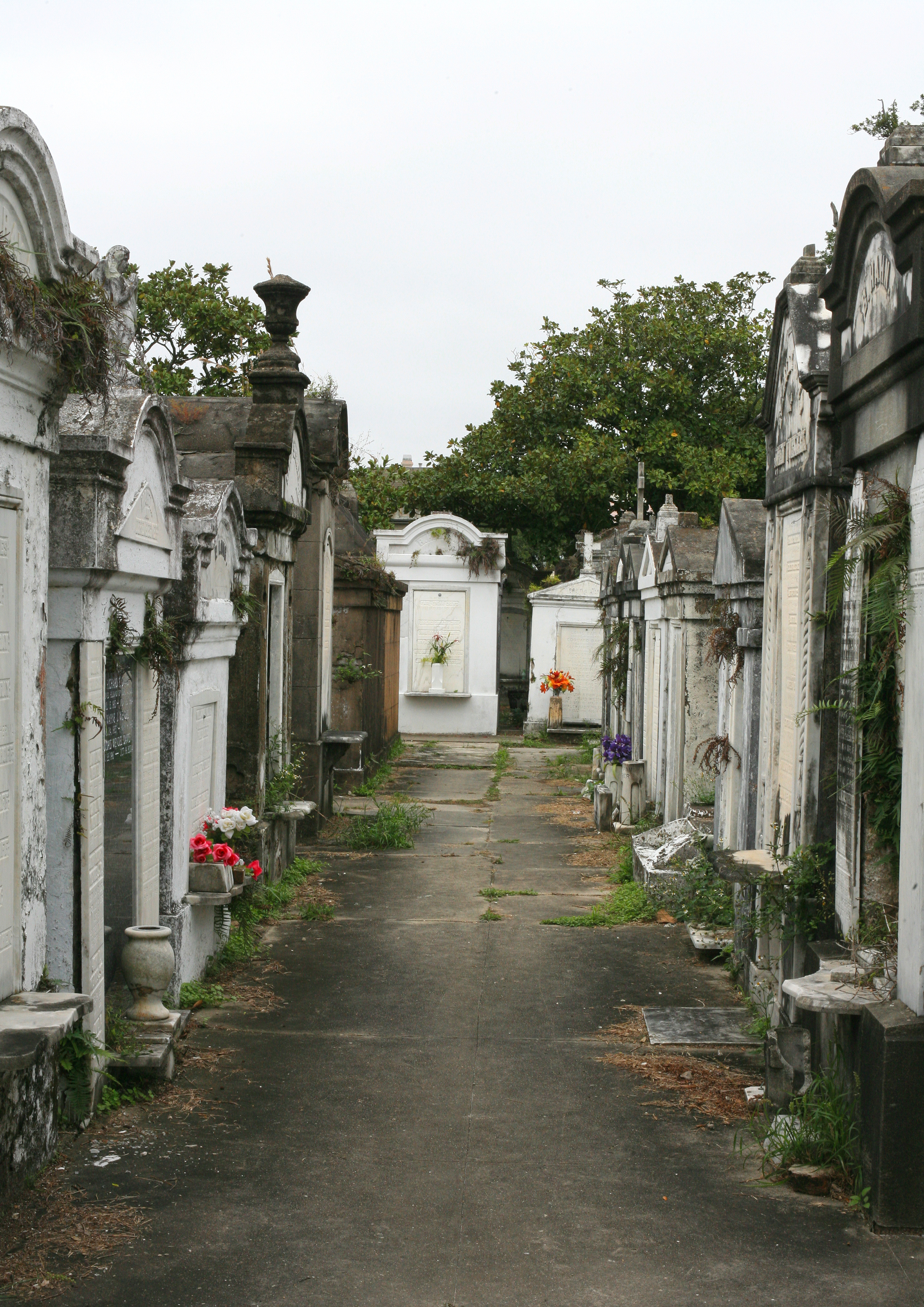
New Orleans is one of the few cities in the United States where you can tell a stranger that your travel plans include visiting several cemeteries and no one will bat an eye. In fact, the city’s many cemeteries are some of its most popular tourist attractions. It’s both in spite of and because of this popularity that it can be hard to figure out which cemeteries you can visit and which you can’t.
Websites and social media are chock full of photos for just about every cemetery in New Orleans, but don’t take this as a sign that you can easily pop into Odd Fellows Rest to stage your own photo shoot. Because of crime and vandalism, some of the city’s cemeteries are actually off limits these days. A few are only accessible to tour groups. The guides for these groups actually have to register with the city, and guards monitor who comes in and out with each group. The tours usually require reservations, too, so spontaneity won’t do you much good.
With all these restrictions, planning my tour of Nola’s cemeteries required a lot more legwork than I expected. Save yourself the headache and start your planning by visiting Save Our Cemeteries, a non-profit dedicated to the preservation of New Orleans’ historic cemeteries. Of all the sites I visited, this one has the most up-to-date information on which cemeteries are currently open to the public, what their open hours are, and whether or not a tour guide is required to access them.
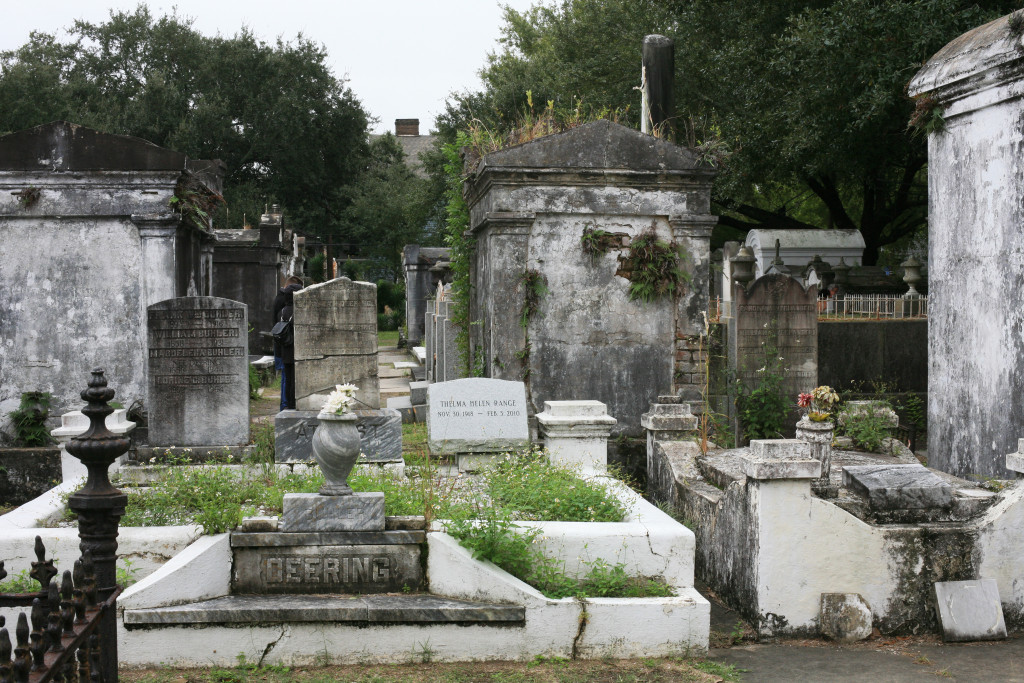
Located in the heart of the Garden District, Lafayette Cemetery #1 is one of the easiest to access. Of the three cemeteries that I visited, this one felt the most European. Surrounded on nearly all sides by trees, the grounds are quite green and somewhat overgrown with weeds. Ferns spring forth from cracks in damaged tombs down every aisle.
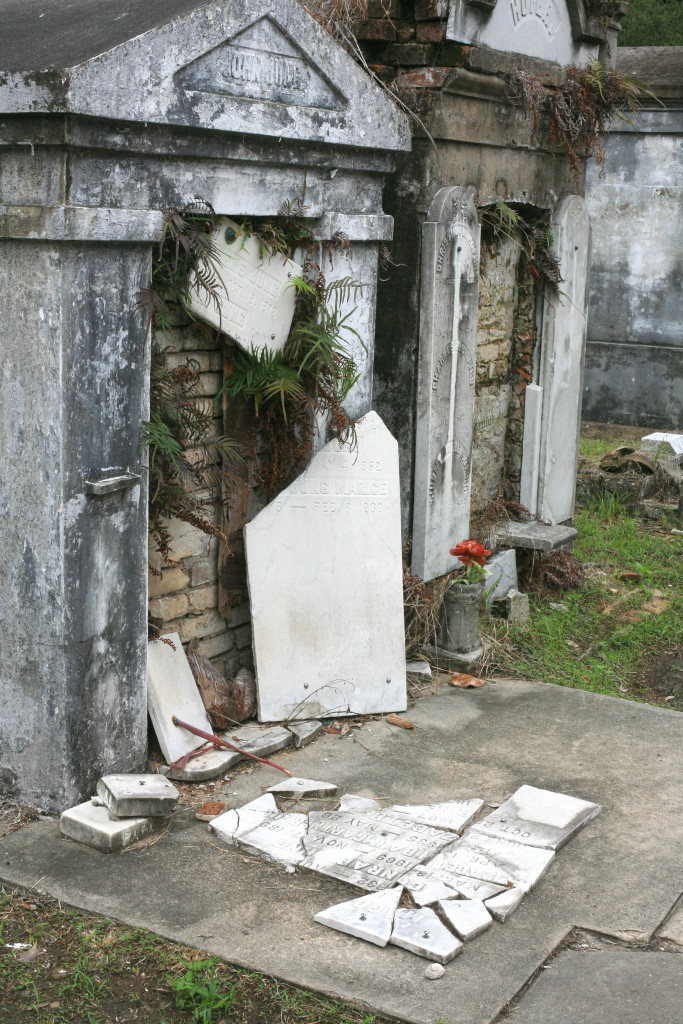
Save our Cemeteries works to preserve these aging tombs, and families are expected to care for their loved ones’ and ancestors’ tombs, but the crumbling facades in various stages of repair and disrepair do offer a glimpse into how the tombs were constructed, how the dead were preserved, and what goes into keeping these monuments intact.
St. Louis #1 is probably the most famous of the city’s many cemeteries, likely due to its notable residents like Homer Plessy (and one very out-of-place and not-yet-used tomb belonging to the actor Nicolas Cage). Because of vandalism, this one of the cemeteries that you can only visit as part of a supervised tour with a registered tour guide. There are plenty of companies that offer tours, ranging from historic to campy. While the vampire and voodoo stories of New Orleans fascinate me, I prefer to hear the history behind the lore rather than indulge in sensationalism. The New Orleans Convention & Visitors Bureau recommended Historic New Orleans Tours, and as the name promised, our guide was knowledgeable on history and quick to dispel myths and misconceptions, particularly when it came to Voodoo.
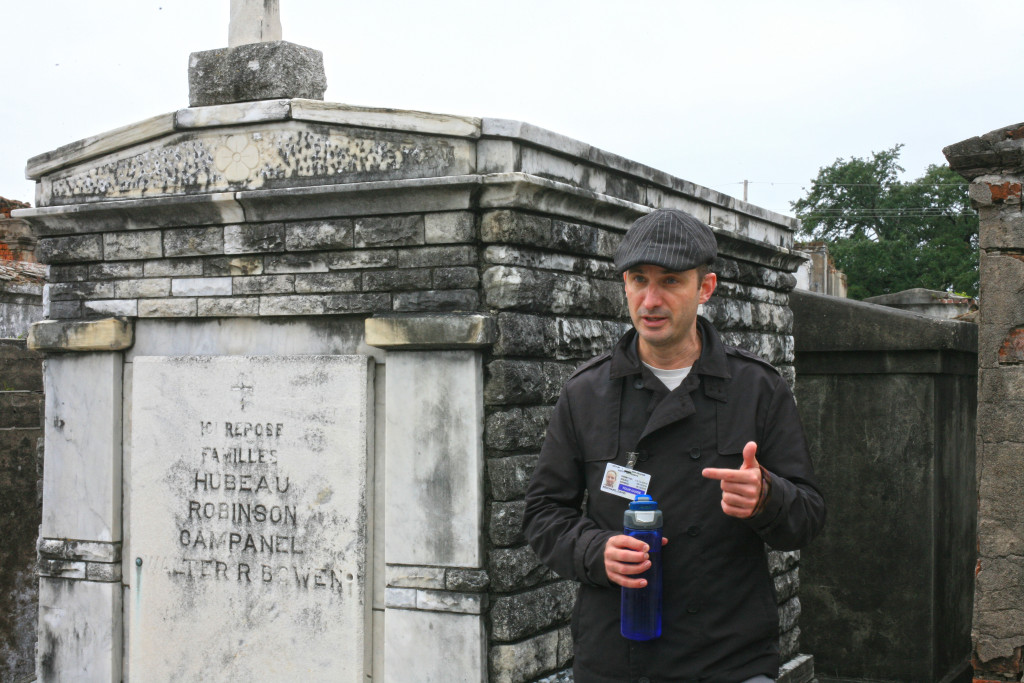
Marie Laveau‘s tomb is a big draw for tourists. I didn’t really know much about the legend of Marie Laveau, known as the “Voodoo Queen of New Orleans,” assuming that 99 percent of what I’d read on the internet would be more fiction than truth.
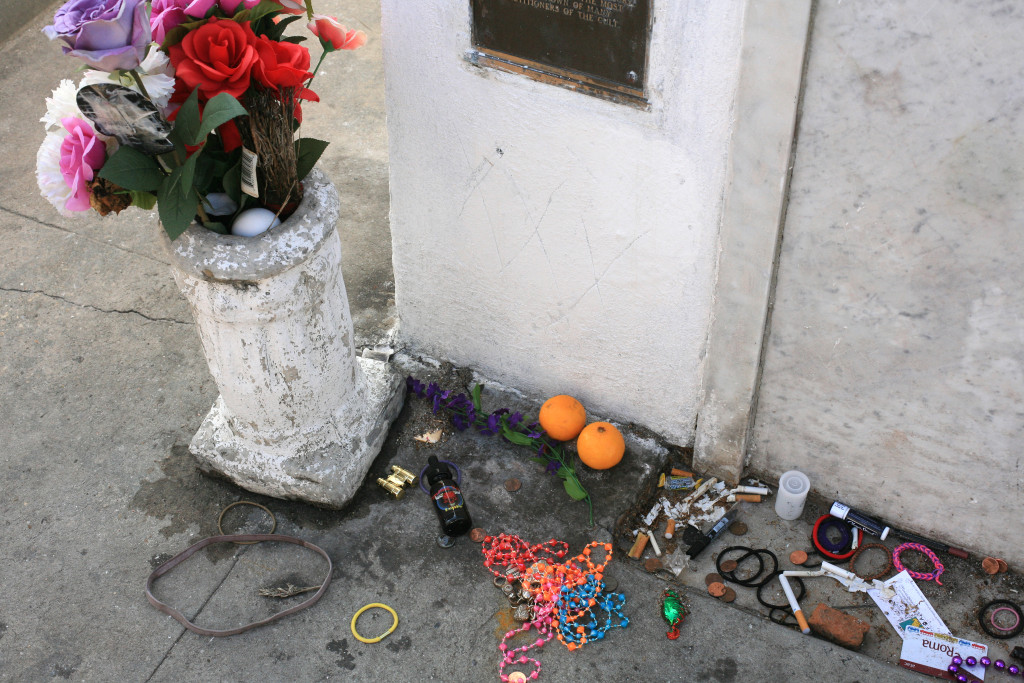
As you can see, lots of visitors like to leave offerings at her tomb (many think that it brings luck), but our guide insisted that this was actually a little disrespectful. He pointed out that a true Voodoo offering should reflect the person to whom it is offered. The hairbands could be seen as true offerings, since Marie Laveau worked for many years as a hair dresser, but the rest (like the Mardi Gras beads) were essentially like leaving trash in front of her tomb. Our guide went on to talk a lot about Voodoo and its connection to both Catholicism and the city’s history. If you’re at all interested in the truths behind this practice in New Orleans, rather than the superstitions and myths, this is a great tour to take.
While Lafayette #1 teemed with green and Old World vibes, St. Louis #1 was something of a densely packed city within a city. St. Roch Cemetery was altogether different from both. Most of the tombs are much lower to the ground, and a good number of tombstones line the surrounding walls. Many guide books are quick to point out that visiting cemeteries in New Orleans isn’t always super safe. Some advise caution around cemeteries near “high crime” neighborhoods. More than a few sources point out the St. Louis #1 is near a housing project, so tourists should be cautious walking to and from it. Personally, I felt quite safe on the way to and from St. Louis #1, but we were walking with a tour guide who knew the streets well. My visit to St. Roch did give me the slightest unease though. While it’s not far from the Bywater, a gentrifying neighborhood, St. Roch cemetery is certainly on the outskirts of any areas that tourists frequent. Along the way, I passed several houses that still bore the “X-code” marks of Katrina. Once there, you do feel quite isolated. I’d advise not going alone and visiting during daylight hours.
One of the biggest draws at St. Roch is the chapel. In the 14th century, St. Roch ministered to victims of the plague. Because of the legend surrounding his healing powers, visitors to the chapel over the centuries have left a variety of oddities as offerings (everything from glass eyes to prosthetic limbs), hoping their offerings would lead St. Roch to heal their ailments.
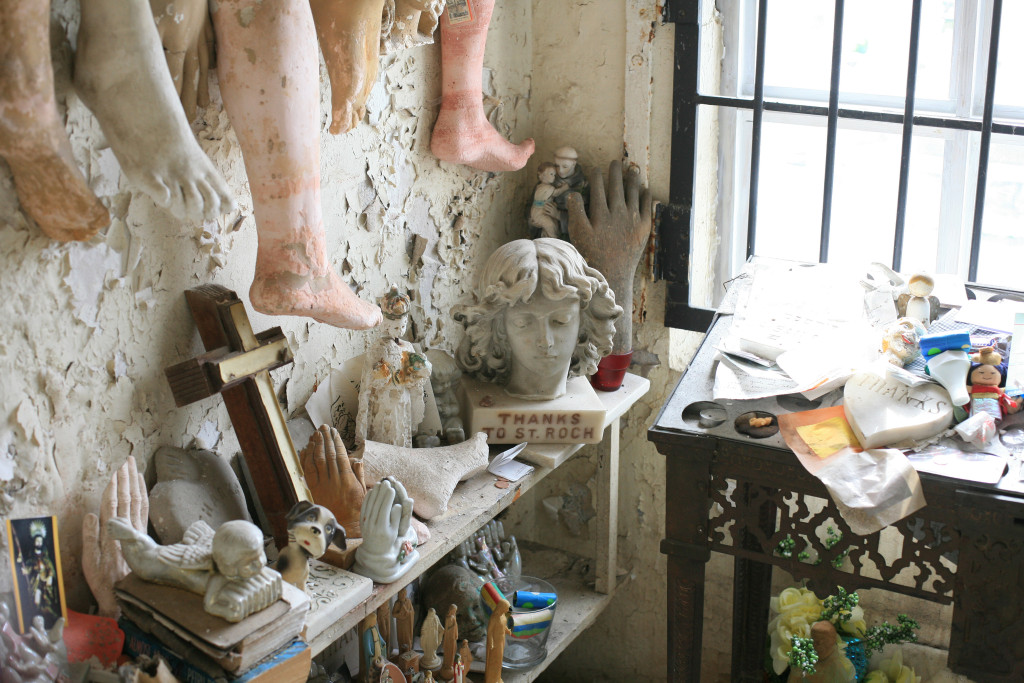
Having only 3 full days in New Orleans, I only visited 3 cemeteries, but each one was remarkable different. And there are many, many more left to see…something to bring me back for a future visit.
Do you have a favorite New Orleans cemetery, or tips for visiting? Share it in the comments below!

I’d love to say that Menswear Monday will be a weekly occurring post, but it’s so challenging to find good, dark-inspired menswear that a weekly post seems unlikely. And when I say “good” dark-inspired menswear, I mean men’s fashion that has a dark sophistication, with subtle touches of edgy, off-center influences. Trying to find gaudy, over-the-top gothic* men’s clothing is a snap. As is finding totally mainstream, vanilla menswear. That sweet spot in the middle? So. Challenging.
The UK site ASOS has been a bright spot in the search for dark-but-understated menswear, and fortunately for those of us in the States, they ship to the U.S. (and pretty quickly at that). In particular, they carry a lot of items from the UK brand Religion, which is hard to find in the U.S. The brand’s kneeling skeleton is a logo that I’d happily sport on my clothes.


Updating the classic button down with gothic materials adds interest without creating a campy look, as with the skull collar tips on this Religion shirt or the faux leather on this shirt from Vito.
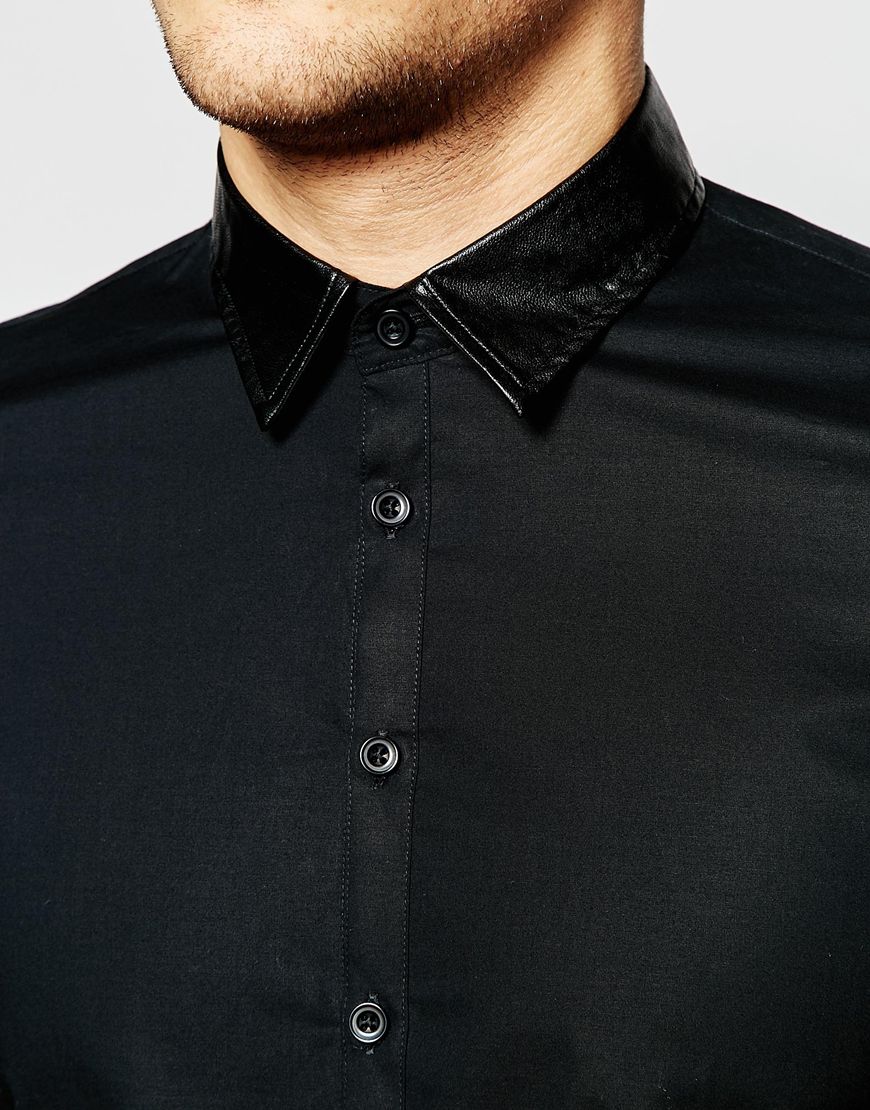
The addition of leather takes the basic black sport coat up a notch as well.

Moving away from ASOS, River Island‘s menswear line is worth a look. The lines on this reverse lapel blazer give it just a hint of “The Count,” don’t you think?

If you’re not on a budget, Alexander McQueen’s line is jam-packed with skull designs this season. The Prince of Wales tie would spice up any suit.
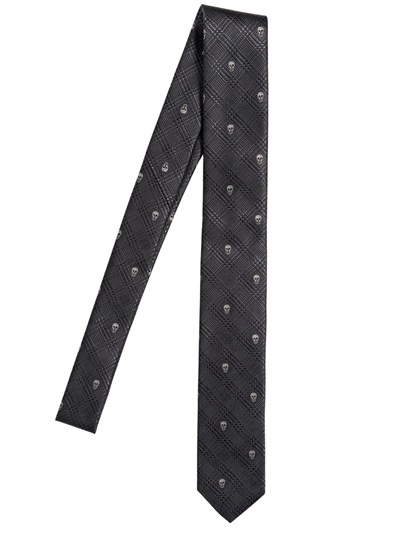
Do you have any favorite shops or sites for dark menswear? Please share them in the comments!
*No offense if that’s your thing. It’s just not Hunt + Haunt’s thing.
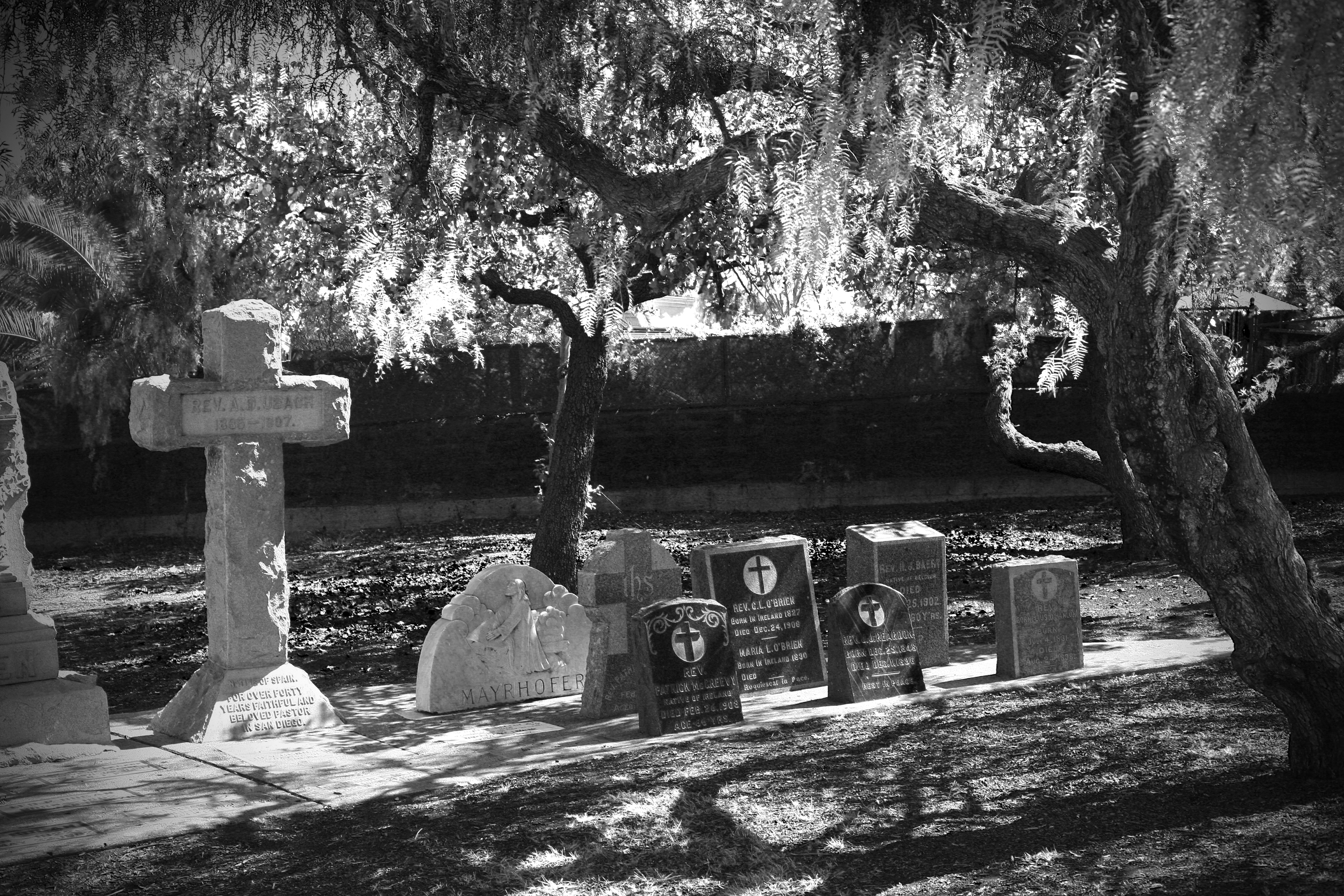
Tucked into a residential pocket of San Diego’s upscale Mission Hills neighborhood, there’s a sunny neighborhood park that’s home to an unexpectedly spooky surprise. Once a cemetery, Pioneer Park today is a prime spot for families to gather for a barbecue or for residents to play a game a fetch with their dogs, but look beyond the playground equipment in the southeast corner of the park to see what really makes this park unique: dozens of historic tombstones and grave markers.
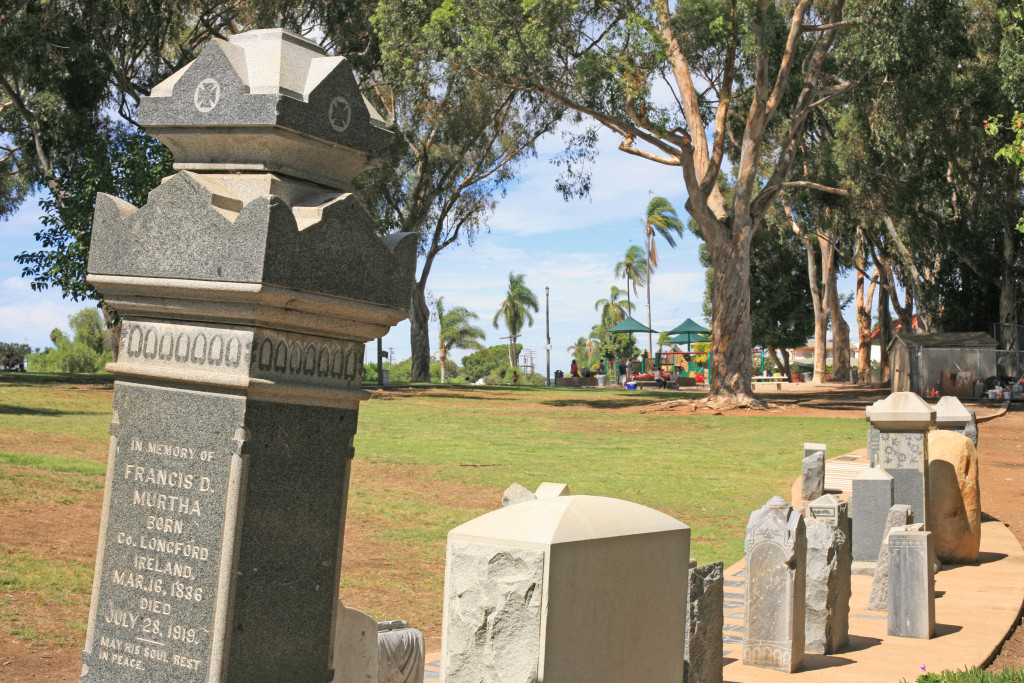
In the later half of the 19th century, this modest plot of land served as a Catholic cemetery and remained so for a century. Hundreds of San Diegans were laid to rest here (estimates range from 800 to more than 4,000 people were buried here), including members of several of the city’s most notable families. But by the 1970s, the cemetery had fallen into disrepair and the city moved to turn the land into a community park. The bodies were left in their graves beneath the ground, but the majority of the tombstones were cleared out, save for a few beautiful rows at the park’s edge, which remained as a memorial.
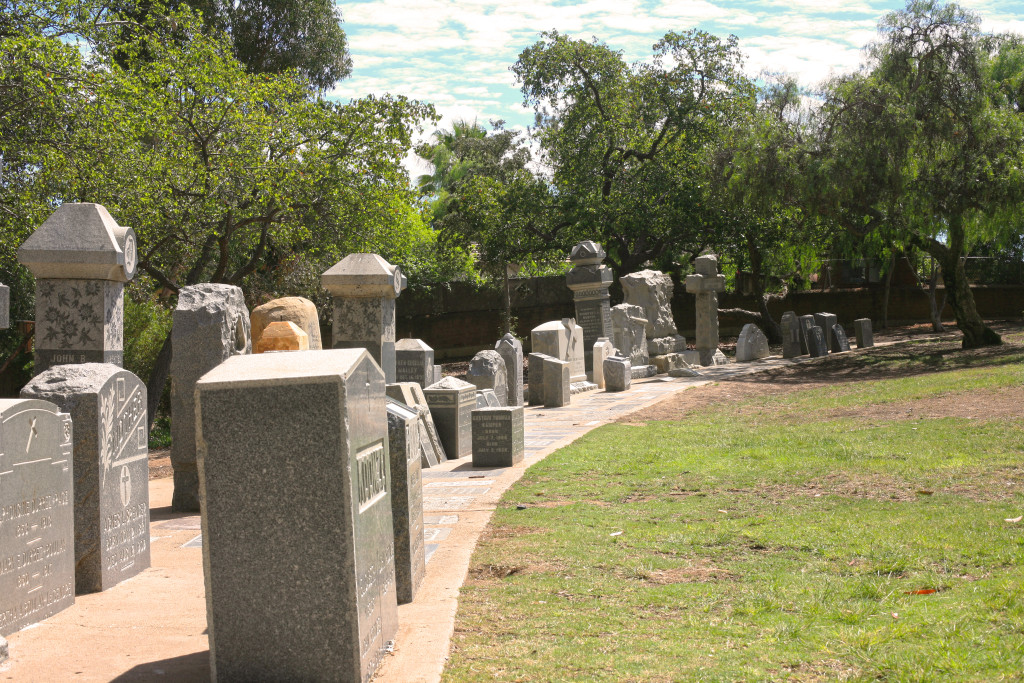
With arching pepper trees and eucalyptus encircling the park, the corner with these remaining tombstones makes for a lovely picnic spot. If you go late at night, you might find local teens hanging out, imbibing in illegal substances, but on a sunny afternoon, it’s the perfect respite from San Diego’s bustling beaches.
